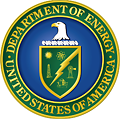-
Richard P. Feynman Center for Innovation
-
Los Alamos Collaboration for Explosives Detection (LACED)
-
SensorNexus
-
Exascale Computing Project (ECP)
-
User Facilities
- Center for Integrated Nanotechnologies (CINT)
- Los Alamos Neutron Science Center (LANSCE)
- National High Magnetic Field Laboratory (NHMFL)
-
Biosurveillance Gateway
-
Pathogen Databases
-
Community Commitment
- Giving Campaigns, Drives
- Economic Development
- Employee Funded Scholarships
- Grants and Sponsorships
- Calendar »
- March events calendar »
- Machine Learning in Solid Earth Geoscience Conference
2nd Annual Machine Learning in Solid Earth Geoscience Conference
Event Description
Machine learning (ML) in its current form is relatively new to geoscience. In the past, ML was applied to a number of geoscience problems but the number of applications before about 2010 was modest.
These applications of ML did not reach their full potential for three primary reasons: scarcity of sufficient data for training and testing, the inability to handle available data efficiently, and computers with insufficient computational speed to process large data sets. Earthquake catalogs, for example, were analyzed, rather than continuous waveform data, due to limitations in data storage capability as well as limitations in instrument density. For subsurface flow and transport predictions, the paucity of data was due to expensive instrumentation and measurement procedures, insufficiently resolved models etc. As we approach the exascale computational era, modeling capabilities have advanced significantly, allowing us to explore parameter and model spaces more thoroughly. We are now at the confluence of the ability to handle massive data streams ‘big data’, ultra fast and massive computers, significant increases in instrumentation density and quality, and advances in ML. As a result we are just now seeing the beginning of the new era in ML applied to geoscience problems that is marked by analyzing continuous geoscience data streams. This Center for Nonlinear Studies conference will focus on modern applications of ML to solid earth geoscience problems, including earthquakes (both tectonic and induced), faulting, Earth imaging with a multitude of data types including seismic, gravity, electrical methods, geodesy, state of stress, etc. We will also explore topics related to geological characterization, subsurface flow and transport, etc. We limit the conference to the solid earth and exclude atmospheric, space and ocean science. This meeting will bring together leading experts with the goal of identifying synergies between these emerging research areas and identifying common themes and open questions.





